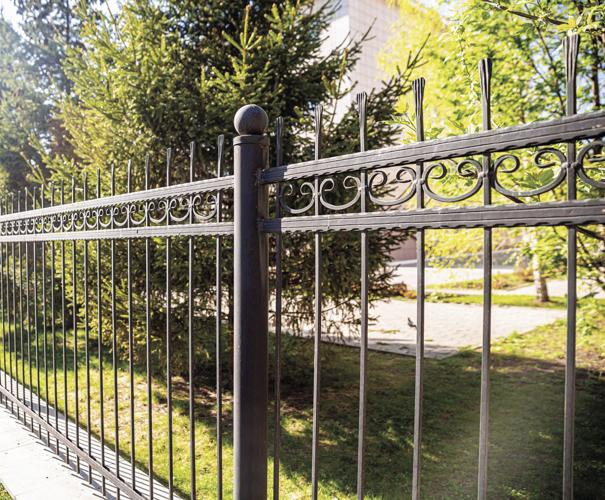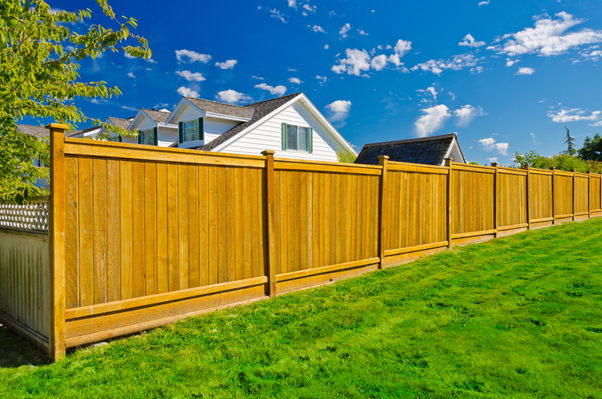All Categories
Featured

When mounting a fence, selecting the appropriate product is vital to stabilizing functionality, looks, and spending plan. Wood, plastic, and light weight aluminum are among the most generally chosen fence materials, each with its toughness and drawbacks. This overview explores the benefits and drawbacks of these options to assist you make an informed decision.

Timber Secure Fencing. Pros:. Natural Beauty: Wood's ageless appeal can enhance any residential property with its warm and classic appearance. Customizable: You can repaint, discolor, or sculpt timber to fit your style preferences. Cost effective: Timber fencing is originally a lot more budget-friendly contrasted to some other products. Ecologically Friendly: As a renewable energy, timber is eco-friendly and commonly thought about green. Cons:. Maintenance-Intensive: Routine securing, paint, or staining is called for to avoid damage from climate and bugs. Prone to Degeneration: Without appropriate care, timber can rot, warp, or fracture in time. Much shorter Life-span: Generally, wood fences last 10-15 years, depending upon the type of timber and upkeep. Wood is an excellent alternative for those that value aesthetic appeals and want to buy regular maintenance to maintain its appearance and durability.
Plastic Fence. Pros:. Low Maintenance: Plastic requires very little treatment-- simply occasional cleansing with soap and water. Climate Resistant: It doesn't warp, rot, or catch insect damages, making it extremely sturdy in numerous environments. Long life: Vinyl fencings can last 20-30 years with little to no fixings. Layout Selection: Available in a large range of colors, appearances, and designs, consisting of wood-like appearances. Disadvantages:. Greater Preliminary Cost: Vinyl fences are more pricey in advance contrasted to timber. Susceptability to Cold: In very cold weather, plastic can become breakable and susceptible to fracturing. Restricted Repair Options: Matching substitute panels can be challenging if damage occurs. Plastic fence is ideal for house owners searching for a durable, low-maintenance solution that supplies contemporary adaptability.

Light Weight Aluminum Fence. Pros:. Rust-Proof: Light weight aluminum stands up to deterioration, making it an excellent option for wet or humid environments. Long lasting: Despite being lightweight, light weight aluminum is solid and can withstand severe climate problems. Reduced Maintenance: It needs minimal upkeep, commonly only periodic cleaning. Long Life expectancy: Light weight aluminum fencings can last decades without considerable damage. Sophisticated Layout: Frequently utilized for ornamental functions, light weight aluminum fence adds a smooth, sophisticated seek to residential or commercial properties. Cons:. High Preliminary Investment: Aluminum fencings are amongst the costlier alternatives on the market. Much less Personal privacy: The open styles usual with aluminum fencing do not give much personal privacy. Susceptible to Damages: While long lasting, aluminum can damage if hit with enough force. Light weight aluminum is an outstanding selection for home owners prioritizing looks and sturdiness without needing much upkeep.
Making Your Choice. When deciding in between plastic, aluminum, or timber secure fencing, consider your concerns:
Timber suits those that value an all-natural look and do not mind placing in maintenance effort. Plastic is the very best option for those seeking a low-maintenance, weather-resistant option. Aluminum supplies sleek style and resilient durability yet may lack personal privacy. By carefully analyzing these materials' functions, you can pick a fencing that complements your building while meeting your visual and practical demands.
Latest Posts
Encouraging Youth with WyHy's Monetary Tools
Published Apr 22, 25
1 min read
Cost Effective Luxury: Discover the Advantages of Laminate Flooring
Published Apr 21, 25
1 min read
Simple And Easy Coin Conversion with Coinstar and WyHy Federal Credit Rating Union
Published Apr 21, 25
1 min read
More
Latest Posts
Encouraging Youth with WyHy's Monetary Tools
Published Apr 22, 25
1 min read
Cost Effective Luxury: Discover the Advantages of Laminate Flooring
Published Apr 21, 25
1 min read
Simple And Easy Coin Conversion with Coinstar and WyHy Federal Credit Rating Union
Published Apr 21, 25
1 min read